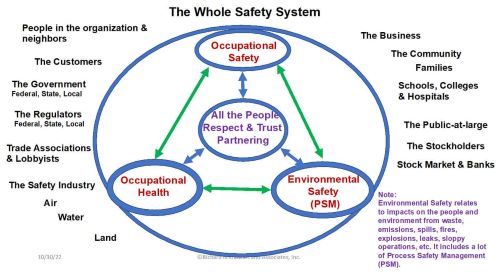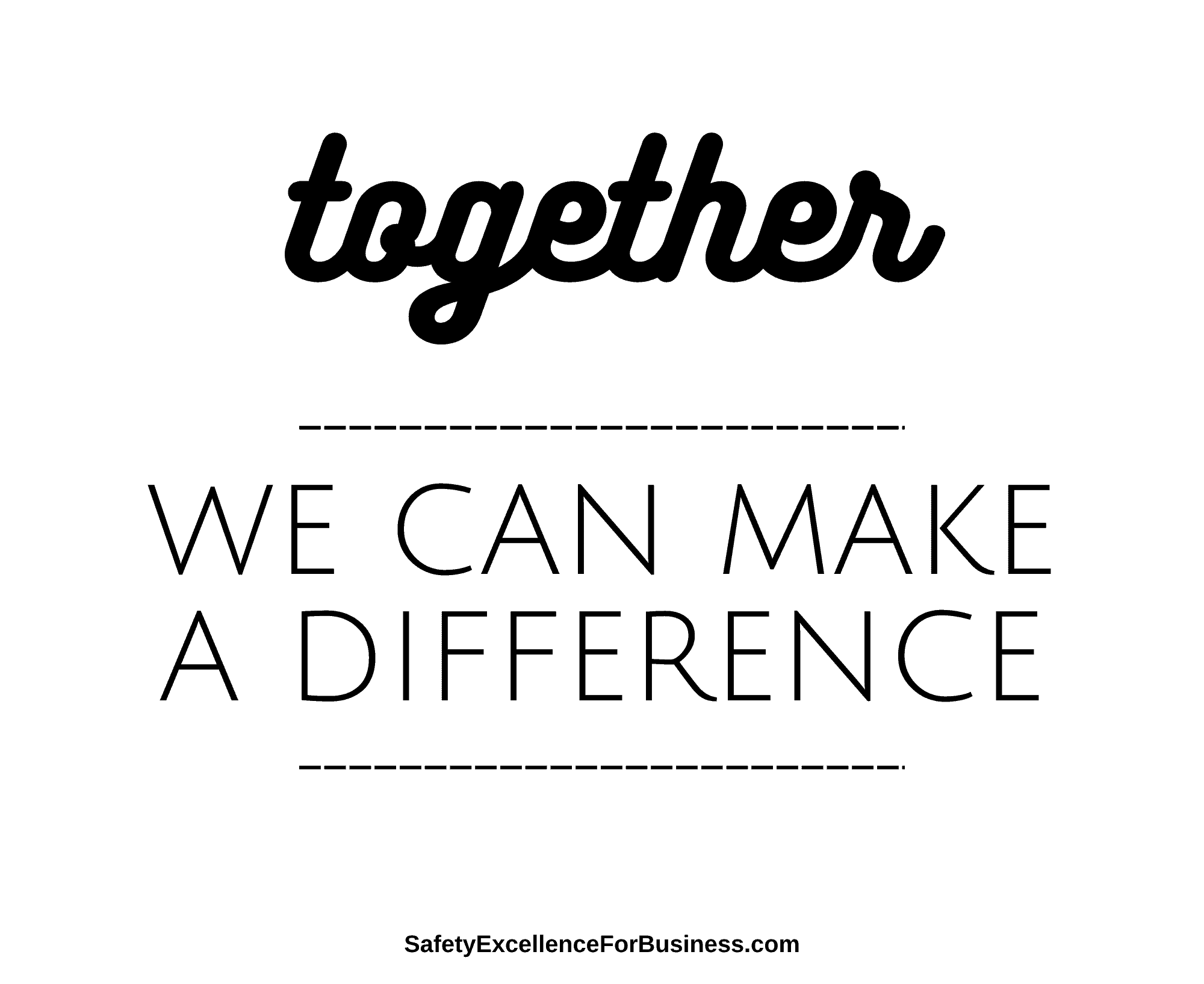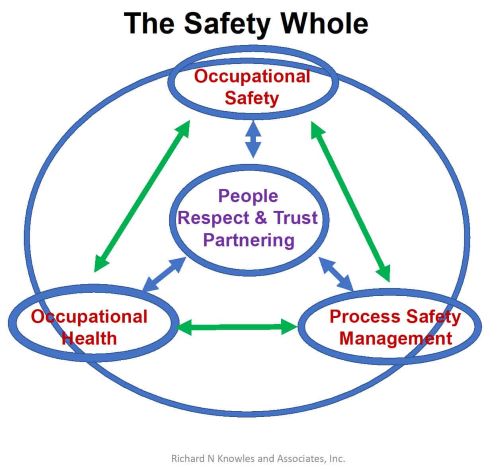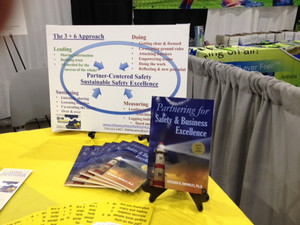In many of my safety blogs, I have emphasized the importance of conversations so we can all learn and grow together.
The conversations brought us all together and helped us to achieve excellent business and safety results. As we became increasingly successful in our work, we introduced a new safety audit we called The Safe Acts Audit. It is very useful and powerful; we used it extensively.

Each week, the safety team of 2-3 people would walk out into the plant among the people, looking at how they were working. We wanted to observe people doing things right.
The auditors would just walk among the people and watch. They did not stop to talk; they just cruised around the plant at random times for about an hour, 2-3 times each week. They would observe 40-60 people each time, and if (by chance) they saw anyone working unsafely,* they would deduct a point or two from the beginning Safe Acts Index number of 100%.
(*Certainly, if the observed behavior of working unsafely was blatant, the person’s supervisor was immediately notified to prevent a potential injury; however, the intent of the audit was purely to observe and record what was being done correctly. It’s a whole different type of audit when you’re looking for the good things, not the negative.)
Most of the time the Index would indicate that 95-98% of the observations were of people working safely. It gave us a very easy way to sense what was happening. We also found that it was an excellent leading indicator. The Safe Acts Audit is not to be confused with a Gemba Walk. Remember, this Safe Acts Audit was simply to observe people, and to record the number of observations of people working safely – that’s the bottom line.
After a year or so, most of us did Safe Acts Audits every time we went into the plant. These were mostly impromptu, and the official Index number was the one generated by the safety people. There is some subjectivity in doing this audit so we thought that the official number should be generated by the same people to reduce the variability of the Index.
Using the Safe Acts Index
Over time, we realized that the Safe Acts Index was a sensitive, leading indicator of the safety climate.
If the Index fell in any audit by 5-10%, there would likely be a recordable injury within the next 3 days. We had to immediately raise everyone’s awareness of the potential, and the need to work more carefully. We did this in several ways.
One way was to put a traffic stop light at the pedestrian gates; a green light indicated that we were doing okay; a yellow light indicated a drop in the Safe Acts Index; and a red light meant we had had a recordable injury somewhere on the plant. With the yellow light all of us would talk more about the safety and hold better toolbox meetings each day, simply to raise awareness.
Another way to raise awareness was to have all eight of us on the leadership team greet everyone coming into work on each shift for a day, reminding them of the need to be more aware, sharing that our Safe Act Audit numbers were indicating we need to all increase our awareness of doing our jobs safely, and that we do not want to see anyone be injured.
Another way was to publish a safety caution in the emails and newsletters we used. We also put cautions onto the login screens of their computers.

Conclusion
All this communication effort was done with respect and caring. We wanted people to know that we cared and that we all had to work together so we could all go home safely to our families.
Doing the Safe Acts Audit was easy and a highly effective part of our total safety effort, contributing to helping us reduce our injury rate by about 97% in four years. It was a positive audit – seeking to raise people’s awareness to do our work safely and to watch out for each other.
There were 1,100 people working at the plant, so using our safety index as a way to look at our performance was reliable. By working together to improve our total performance, including safety, we did not suffer the problem of under reporting, but we kept a keen eye on that potential, so it did not develop.
If you’d like to know about how important this Safe Acts Audit process is or how you could adopt it for your organization, please give me a call at 716-622-6467.








 A review of the Bureau of Labor Statics summary of fatal occupational injuries for 2011-2017 shows a 1% drop in fatalities from 2016 to 2017 to a total of 5,147 people having lost their lives at work. This is about 9% higher than the 4,693 people killed in 2011. The top three 2017 fatalities categories are roadway accidents totaling 1,299 (up 15% since 2011); slips, trips and falls totaling 887 (up 23% since 2011); and murders and suicides totaling 733 (up by only 2% since 2011).
A review of the Bureau of Labor Statics summary of fatal occupational injuries for 2011-2017 shows a 1% drop in fatalities from 2016 to 2017 to a total of 5,147 people having lost their lives at work. This is about 9% higher than the 4,693 people killed in 2011. The top three 2017 fatalities categories are roadway accidents totaling 1,299 (up 15% since 2011); slips, trips and falls totaling 887 (up 23% since 2011); and murders and suicides totaling 733 (up by only 2% since 2011). We need courageous leaders who focus on the people, change and the future. Leaders value sharing information, building trust and interdependence, and helping people to see how their job is important for the success of the whole venture.
We need courageous leaders who focus on the people, change and the future. Leaders value sharing information, building trust and interdependence, and helping people to see how their job is important for the success of the whole venture. Go into your organizations listening to and talking with the people. Share your vision. Build trust and interdependence. Create safe spaces for people to talk with each other, to share and create the future. Everything will change. That is what I experienced at the Belle Plant.
Go into your organizations listening to and talking with the people. Share your vision. Build trust and interdependence. Create safe spaces for people to talk with each other, to share and create the future. Everything will change. That is what I experienced at the Belle Plant. At our exhibit booth, Claire and I shared our Partner-Centered Leadership approach. We handed out brochures and other literature that can help organization’s achieve safety excellence and move towards their OSHA Star designation. We were there to share important information, including the need to be able to lift up and address one’s safety elephants that are preventing organizations from being the best they can be.
At our exhibit booth, Claire and I shared our Partner-Centered Leadership approach. We handed out brochures and other literature that can help organization’s achieve safety excellence and move towards their OSHA Star designation. We were there to share important information, including the need to be able to lift up and address one’s safety elephants that are preventing organizations from being the best they can be. The keys for addressing both of these concerns in building sustainability into their programs and in achieving the OSHA Star status is for the people at all levels and parts of the organization to talk together to get clear and aligned on just what they really want to do. How sincere and authentic is the desire to have safety excellence for the long-term? (This means Communication with a Capital C—requiring Co-creation, Clarity and Coherence.) In addition, together they must take the time to co-create a set of ground rules about how they agree to work together in order to achieve their safety goals and then hold each other accountable to live up to them. (That’s Partnership and Commitment!) The process to achieve this is available to you and your organizations now.
The keys for addressing both of these concerns in building sustainability into their programs and in achieving the OSHA Star status is for the people at all levels and parts of the organization to talk together to get clear and aligned on just what they really want to do. How sincere and authentic is the desire to have safety excellence for the long-term? (This means Communication with a Capital C—requiring Co-creation, Clarity and Coherence.) In addition, together they must take the time to co-create a set of ground rules about how they agree to work together in order to achieve their safety goals and then hold each other accountable to live up to them. (That’s Partnership and Commitment!) The process to achieve this is available to you and your organizations now. This is all about having everyone go home in one piece and having a profitable business. Excellence in both the safety performance and business results are attainable.
This is all about having everyone go home in one piece and having a profitable business. Excellence in both the safety performance and business results are attainable. Talking together is one of the most important things we can do to help to improve the safety in our workplaces. Letting people know that you care about them and respect them. But too many times I have seen supervisors and managers talking down to their employees ordering them to do this or that.
Talking together is one of the most important things we can do to help to improve the safety in our workplaces. Letting people know that you care about them and respect them. But too many times I have seen supervisors and managers talking down to their employees ordering them to do this or that. In reading the various, publicly-available reports, it looks as if all three of these big mistakes were probably made. The push for production was dominant, piping changes had been made without documentation, the safety procedures were modified or ignored, operating problems were not properly addressed and tolerated, previous practices allowed the draining of small quantities of material right into the room, and the communications were such that people probably could not or would not tell their management, who probably were not listening anyway, all the problems.
In reading the various, publicly-available reports, it looks as if all three of these big mistakes were probably made. The push for production was dominant, piping changes had been made without documentation, the safety procedures were modified or ignored, operating problems were not properly addressed and tolerated, previous practices allowed the draining of small quantities of material right into the room, and the communications were such that people probably could not or would not tell their management, who probably were not listening anyway, all the problems. At a recent safety conference I learned about a way to quickly assess whether a manufacturing site was cutting corners and trying to get by on less than the best. The person speaking, Ewan Alexander of BHP Billiton, said that he looked for improvised tools being used.
At a recent safety conference I learned about a way to quickly assess whether a manufacturing site was cutting corners and trying to get by on less than the best. The person speaking, Ewan Alexander of BHP Billiton, said that he looked for improvised tools being used. 




